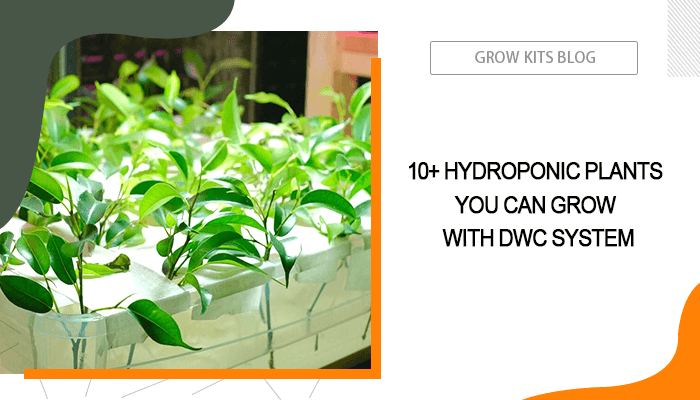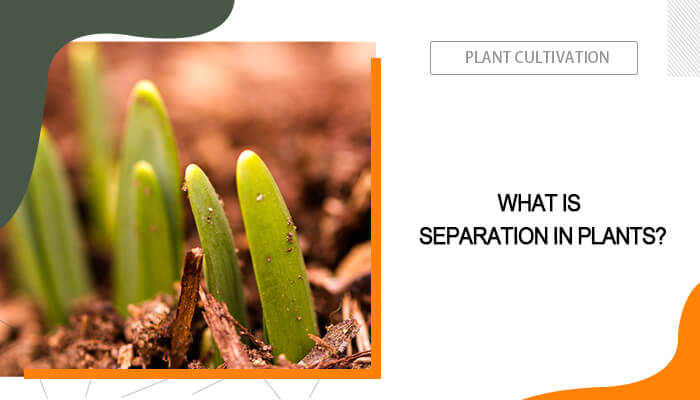Are you looking to add a touch of elegance to your indoor garden? The Pink Princess Philodendron, renowned for its stunning pink and green variegation, is a must-have for plant enthusiasts. However, to ensure this beautiful plant thrives and showcases its vibrant colors, proper care is essential.
In this article, we’ll explore everything you need to know about how to care for Pink Princess Philodendron, from optimal lighting conditions and watering techniques to humidity requirements and fertilization tips. Whether you’re a seasoned plant parent or a beginner, mastering the care of this striking plant will not only enhance your living space but also boost your confidence in indoor gardening.
Now, it’s time to dive into the best practices for nurturing your Pink Princess Philodendron. This will ensure it flourishes and remains a stunning centerpiece at your home!
Table of Contents
What Is Philodendron Pink Princess?
Philodendron Pink Princess is a popular and visually striking houseplant known for its unique variegated leaves. This tropical perennial features dark green foliage splashed with vibrant pink patches, creating a stunning contrast that adds a touch of elegance to any space.
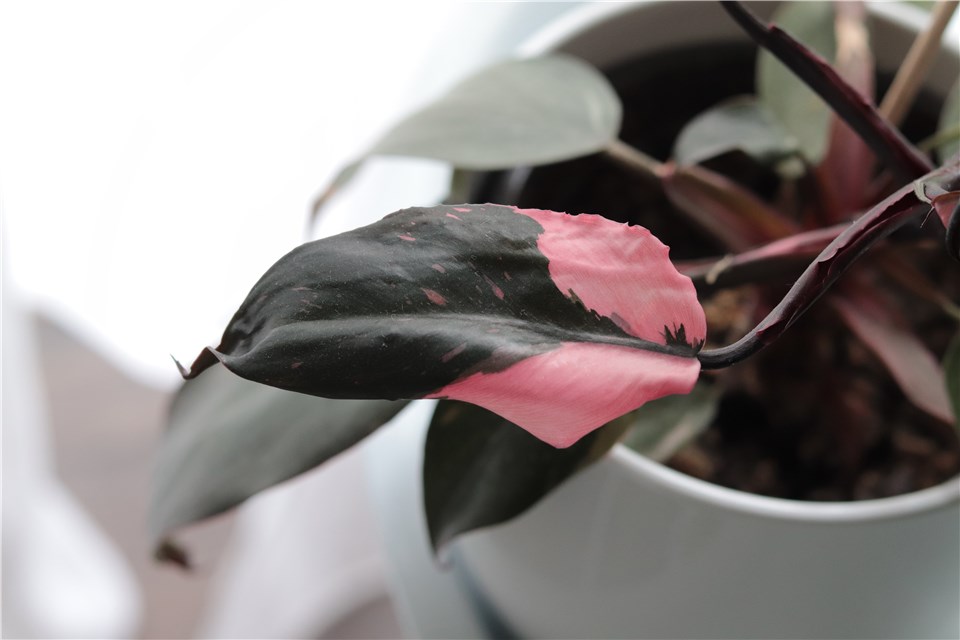
What Is Philodendron Pink Princess
How to Propagate Philodendron Pink Princess?
Propagating the Philodendron Pink Princess is an excellent way to elevate your indoor gardening game while enjoying the stunning beauty of this unique plant. Not only does propagation enable you to expand your collection at little to no cost, but it also allows you to share vibrant cuttings with friends and family, spreading the joy of gardening. Here, we’ll brief the basic steps to propagate Philodendron Pink Princess.
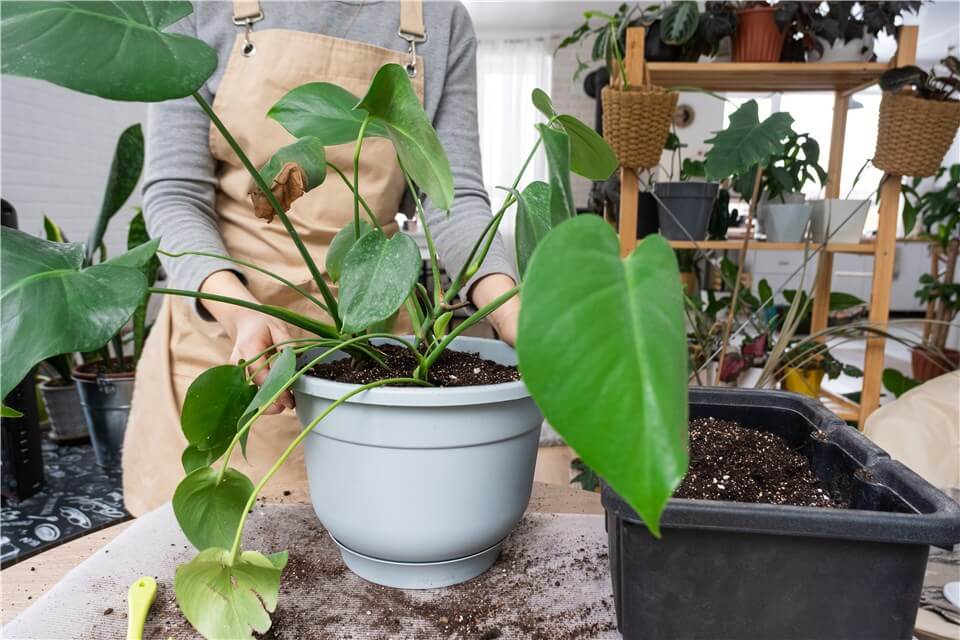
How to Propagate Philodendron Pink Princess
- Select a healthy stem with at least one node and a few healthy leaves. The node is essential for root development.
- Use clean, sharp scissors or pruning shears to cut the stem just below the node. Aim for a cutting about 4-6 inches long.
- Remove any yellow or damaged leaves, and allow the cutting to dry for a few hours to form a callus over the cut end.
- For water propagation, you can place the cutting in a glass of water, ensuring the node is submerged. Change the water every few days; Alternatively, for soil propagation, plant the cutting in a well-draining potting mix. Water lightly and cover with a plastic bag or a humidity dome to retain moisture.
- Pay attention to keep the cutting in a warm, humid area with bright indirect light. Avoid direct sunlight to prevent scorching.
After a few weeks, check for root development. Once roots are a few inches long, you can transfer the cutting to a pot.
Best Ways to Care for Pink Princess Philodendron
The Philodendron Pink Princess is not excessively hard to care for, but it does require specific conditions to thrive. It prefers bright, indirect light, high humidity, and well-draining soil, along with regular watering when the top inch of soil is dry. While it can be more sensitive to changes in its environment compared to some other houseplants, as long as these basic needs are met, it can flourish and add a striking aesthetic to your plant collection.
In this section, we’ll take a closer look at how to care for pink princess philodendron from various different aspects.
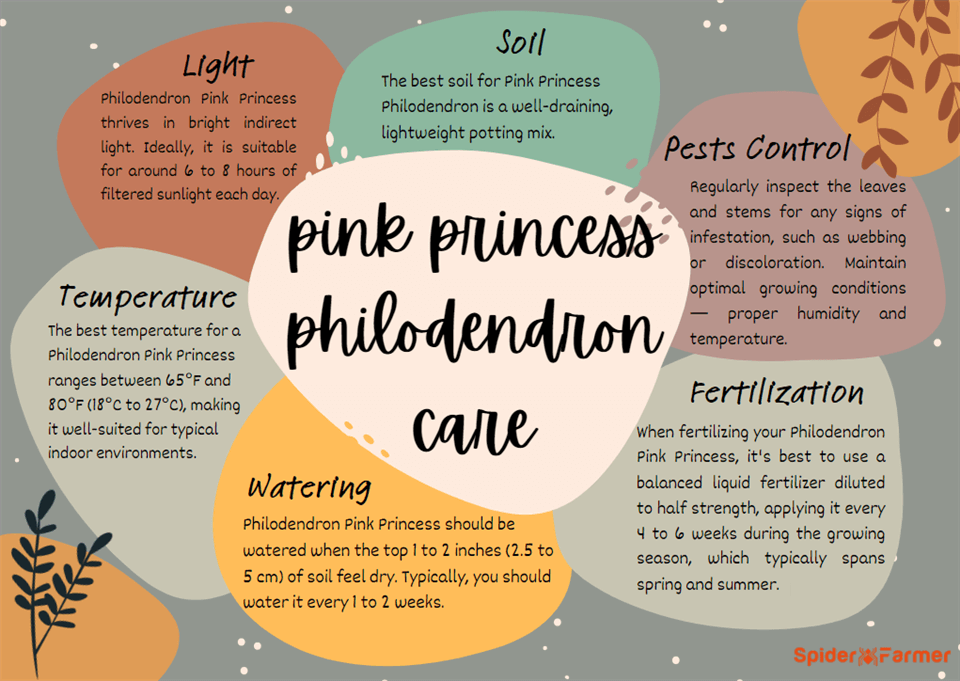
Pink Princess Philodendron Care
Light
Philodendron Pink Princess thrives in bright, indirect light. While it can tolerate lower light conditions, adequate light is essential for maintaining its vibrant pink variegation. Ideally, it is suitable for around 6 to 8 hours of filtered sunlight each day. You should avoid direct sunlight, as it can scorch the leaves. To promote healthy growth and vibrant colors, consider placing your Pink Princess near a window with sheer curtains or place it under LED grow lights.
Soil
The best soil for Pink Princess Philodendron is a well-draining, lightweight potting mix. Here are some key components to consider:
- Aroid Mix: A mix specifically formulated for aroids, which includes ingredients like peat moss, perlite, and orchid bark, is ideal.
- Drainage: Ensure the soil allows for good drainage to prevent root rot. Adding perlite or coarse sand can enhance drainage.
- Moisture Retention: While the soil should drain well, it should also retain some moisture. A balance between moisture retention and drainage is crucial.
- pH Level: A slightly acidic to neutral pH (around 6.0 to 7.0) is best for optimal nutrient absorption.
Temperature
The best temperature for a Philodendron Pink Princess ranges between 65°F and 80°F (18°C to 27°C), making it well-suited for typical indoor environments. This tropical plant thrives in warm conditions, and maintaining temperatures within this range helps promote healthy growth and vibrant foliage. It's important to avoid exposure to cold drafts or sudden temperature fluctuations, as these can stress the plant and affect its overall health. By providing a stable and warm environment, you can ensure your Philodendron Pink Princess remains lush and vibrant.
Watering
Philodendron Pink Princess should be watered when the top 1 to 2 inches (2.5 to 5 cm) of soil feel dry. Typically, this means watering every 1 to 2 weeks. As it is ideal for high humidity - around 60% or more, you’re suggested to always check the soil moisture level before watering, and ensure the pot has good drainage to prevent root rot. Adjust your schedule based on your specific environment and the plant's needs.
Fertilization
When fertilizing your Philodendron Pink Princess, it's best to use a balanced liquid fertilizer diluted to half strength, applying it every 4 to 6 weeks during the growing season, which typically spans spring and summer. This approach provides the necessary nutrients without overwhelming the plant, promoting vibrant foliage and encouraging healthy growth. Be sure to pause fertilization in the fall and winter when the plant's growth slows down. Additionally, always water the plant before applying fertilizer to prevent root burn, ensuring that your Pink Princess thrives beautifully throughout the year.
Pests Control
To effectively prevent pests on your Philodendron Pink Princess, start by regularly inspecting the leaves and stems for any signs of infestation, such as webbing or discoloration. Maintaining optimal growing conditions—like proper humidity and temperature—can help reduce stress on the plant, making it less susceptible to pests. Consider using oil or insecticidal soap as a preventive measure; applying these treatments every few weeks can deter common pests like spider mites and aphids. Additionally, keeping the plant clean by gently wiping the leaves with a damp cloth helps remove dust and potential pests, promoting better air circulation and overall plant health.
FAQs about Pink Princess Philodendron
By the end of the post, we’ll discuss several questions frequently-asked by pink princess philodendron growers.
Why is philodendron pink Princess so expensive?
The Philodendron Pink Princess is expensive due to its rarity and the unique, striking appearance of its pink and green variegated leaves. This cultivar is not mass-produced, making it harder to find, and the propagation process can be slow and challenging, with successful cuttings often yielding fewer plants. Additionally, its popularity among plant enthusiasts has driven demand, further increasing its market value. As a result, collectors are often willing to pay a premium for this visually stunning plant.
How do I make my pink princess philodendron pink?
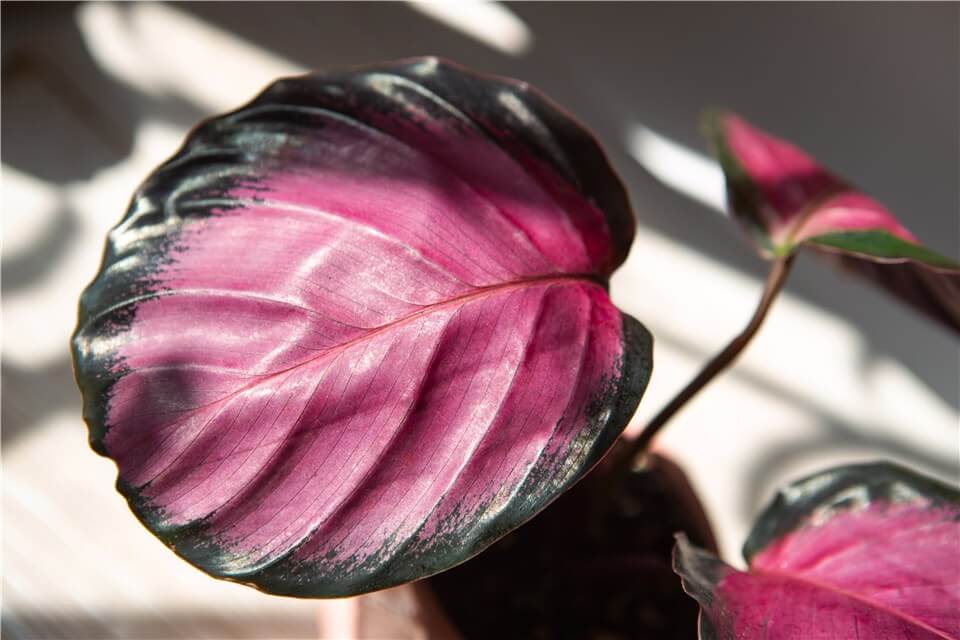
Make My Pink Princess Philodendron Pink
To encourage your Pink Princess Philodendron to develop its signature pink variegation, ensure it receives plenty of bright, indirect light, as this helps the plant produce more vibrant colors. Avoid direct sunlight, which can scorch the leaves. Additionally, maintain a consistent watering schedule, allowing the top inch of soil to dry out between waterings, and provide a well-draining potting mix enriched with organic matter. Keeping the humidity levels high—ideally between 60-80%—will also promote healthy growth and variegation. Lastly, consider using a balanced fertilizer during the growing season to supply essential nutrients that support vibrant foliage.
How to prune Pink Princess Philodendron?
To prune your Pink Princess Philodendron, start by assessing the plant for any yellowing or damaged leaves, as well as overly leggy stems that detract from its aesthetic appeal. Use clean, sharp pruning shears to make cuts just above a node or leaf junction, which promotes healthy regrowth. Aim to maintain a balanced shape and encourage bushier growth by trimming back long stems and removing any leaves that lack variegation, as this can help the plant focus its energy on producing more vibrant foliage. After pruning, ensure the plant is in a well-lit environment and monitor its care routine to support robust recovery and growth.
Is pink princess philodendron toxic to cats?
Yes, the Pink Princess Philodendron is toxic to cats. It contains calcium oxalate crystals, which can cause irritation and discomfort if ingested. Symptoms of toxicity may include drooling, vomiting, and difficulty swallowing. If you suspect your cat has ingested any part of the plant, it's best to consult a veterinarian for advice and potential treatment. To keep your feline friends safe, consider placing the plant out of their reach or choosing non-toxic alternatives.










